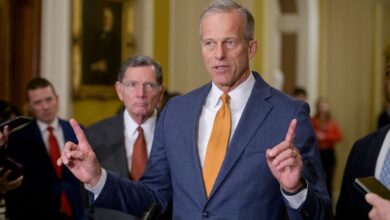Mets bolster scouting presence in Japan, Pacific Rim

David Stearns promised that he would take his first year running the Mets to fully understand what he had in his staff and what changes he wanted to make. Over the offseason, once that period ended and he more fully remolded the front office to his vision, a less visible department was among those to endure a shift: international scouting.
In addition to bringing in a new head, James Kang, previously of the Guardians and Dodgers, Stearns and the Mets decided to bolster their scouting presence in a territory in which they want to be better: Japan and the Pacific Rim.
“We’ve staffed up in that segment of the world,” Stearns, president of baseball operations, told Newsday. “There’s a lot of talent coming from over there. A lot of it over in the Pacific Rim is [about] having the proper network. It’s as much about knowing people there as actually being able to evaluate players correctly. So we felt being able to add some folks who are well established in the market, are well connected in the market would benefit us.”
That change came on the heels of the Mets whiffing on the top Japanese free agent in consecutive off-seasons, leaving team officials right on up to owner Steve Cohen a bit befuddled.
In 2023-24, they tried hard to bring in pitcher Yoshinobu Yamamoto, who opted to sign with the Dodgers on a 12-year, $325 million contract — the same terms that the Mets offered. Cohen joked this week that Yamamoto “should send me a thank you note or something” for getting his price up. The Dodgers also signed Shohei Ohtani that month.
This past winter, the Mets met with pitcher Roki Sasaki, who likewise picked the Dodgers.
“We had no shot at Sasaki,” Cohen said. “I don’t know if it was the Dodgers [all along], but it definitely wasn’t us. That was clear . . . They have Shohei, they want to play with Shohei. I get that. Why not?”
As for having more success in Japan in the future?
“I know I want it,” Cohen said.
The Mets long have had a presence in Japan, which Stearns called “a pretty good base.” They most recently added a player from the country when then-general manager Billy Eppler convinced Kodai Senga to come to Queens prior to the 2023 season.
Last year, the Mets’ Asia group featured two scouts: Jeffrey Kusumoto in Japan and Bon Kim in South Korea.
Heading into this year, the Mets doubled that by adding Clinton Matsuzawa as an “ambassador scout” in Japan, plus Andrew Riddell in Australia and New Zealand.
Tom Fleischman, senior manager of amateur scouting domestically, also oversees goings-on in the Pacific Rim.
Merely having bodies in that corner of the globe won’t impact players’ perception of the Mets, Senga said. Unlike in Latin America, where building relationships with teenage players and their families and advisors is a key part of a scout’s job, in Japan players and scouts rarely interact.
The goal, though, is for others within the Japanese baseball world to have a higher degree of familiarity with the Mets.
“Having a greater presence helps,” Stearns said. “It helps with networking and ensuring that those who are actively influencing players understand that the Mets are involved in this market and understand the benefits that we can provide.”
Stearns said he likely will visit Japan again at least once this year, as he did last season, in part to help impart that message.
“Those benefits domestically are appreciated. And I think to some extent in Japan as well,” he said. “We just need to make sure that there’s an understanding of who we are.”
Another seemingly evolving wrinkle: There have been hints at changes to the baseball cultural norms in Japan, in which some youngsters prefer to come straight to America to pursue a pro career instead of following the traditional path through Japan’s major league then maybe coming stateside once they’re established.
First baseman Rintaro Sasaki, for example, is at Stanford. And two-way player Shotaro Morii recently signed with the Athletics out of high school.
“There’s drips,” Stearns said. “I don’t know that there is a groundswell of that.”
Senga said through an interpreter: “There are some young players who sprinkle in and come over very early on in their careers. But there’s definitely a trend that playing baseball in the states is a big deal, a big feat. And it’s a good thing.”
The most important factor, according to Senga, who lived it, is the face-to-face meetings that happen once players are eligible to talk to major-league clubs. And to that end, he is ready and willing to help however the Mets want in the future.
“The biggest part ends up being that last presentation, to try to lure them over to the Mets,” Senga said. “Everything helps to a degree, but that last little push is the biggest part. If David has the willingness to look for players over in Japan, and if there’s anything I can help with, I’m open to that.”
Stearns said: “In the entire organization, ownership on down, we want to be industry leaders in everything we do. And that includes our Japanese and Pacific Rim operation.”
Source link



